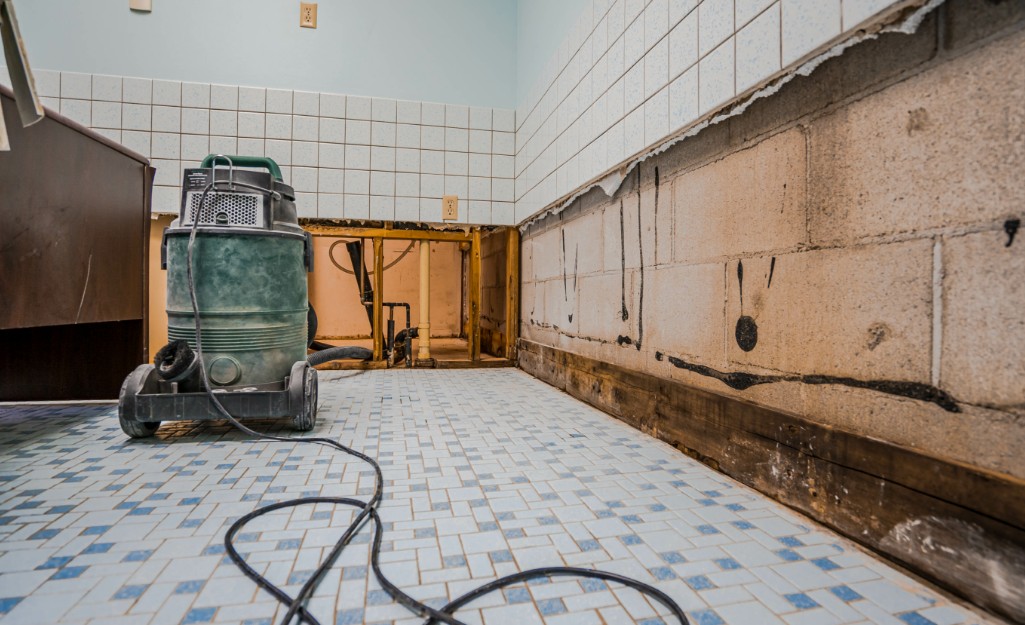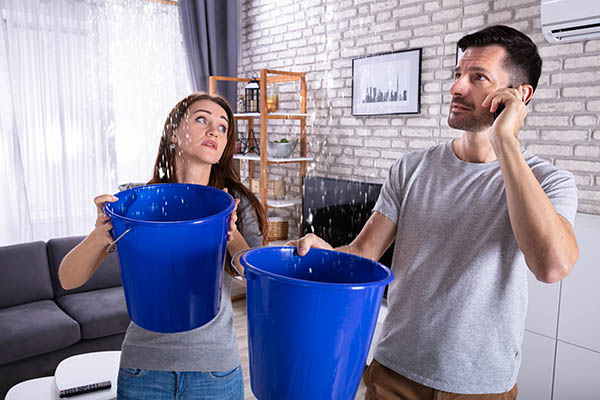Water Damage Restoration 101: Recognizing the Process and Cost
Water damage can strike suddenly, leaving house owners in a state of complication. Comprehending the repair procedure is essential for effective healing. From evaluating the damage to picking the appropriate service supplier, each action affects the overall end result and expense. Aspects such as the sort of water damage and urgency also play a significant role. What are the certain methods made use of in repair, and how can one prepare for potential expenses?
Kinds Of Water Damage

Preliminary Assessment and Inspection

Water Removal Methods
Adhering to the first assessment, effective water removal strategies are used to mitigate damage and avoid more problems. These strategies entail the use of customized devices such as submersible pumps and industrial-grade vacuums - Water Damage Restoration. The choice of approach relies on the volume of water present and the type of products impacted. For standing water, completely submersible pumps are typically made use of for fast elimination, while vacuums are excellent for removing water from carpets and furniture. Additionally, advanced methods like water extraction floor coverings may be utilized for hard-to-reach locations - Flood Cleanup Services. The objective is to remove as much water as possible, lessening the capacity for mold development and structural damage. Motivate and effective water removal is crucial in the overall water damage remediation process
Drying Out and Dehumidification Process
As soon as the water removal is complete, the drying out and dehumidification procedure ends up being essential to recovering the damaged area. This stage typically employs industrial-grade dehumidifiers and air movers to efficiently reduce moisture levels. The dehumidifiers attract in moist air, removing excess moisture, while air movers flow air to increase dissipation. Monitoring equipment is typically used to track moisture and temperature degrees, making certain suitable drying out problems. The duration of this procedure can differ depending upon the degree of the water damage and ecological variables. It is vital to extensively dry all impacted materials, consisting of walls, floor covering, and furnishings, to protect against mold and mildew growth and structural damage. Correct execution of this step is important for an effective reconstruction result.
Cleansing and Disinfecting Afflicted Areas
Once the drying out process is full, a complete initial evaluation and evaluation of influenced areas is essential to identify contamination levels. Reliable cleansing methods and ideal products should after that be utilized to get rid of debris and stains. Sanitization and disinfection methods are crucial to ensure that unsafe pathogens are removed, restoring the area to a secure condition.
Initial Assessment and Examination
Before beginning any type of repair initiatives, a complete initial evaluation and evaluation of the influenced areas are crucial for efficient cleaning and sanitizing. This procedure involves identifying the degree of water damage, identifying the source of the water invasion, and examining the materials affected. Examiners typically search for indications of mold development, structural stability issues, and harmed belongings. The evaluation also includes examining dampness degrees using customized tools to guarantee no hidden water pockets remain, as these can result in additional issues. Recording the searchings for is vital for preparing the following steps in the restoration process. An in-depth first analysis makes it possible for reconstruction professionals to design a targeted method for efficient cleaning and sterilizing, eventually lessening damage and health and wellness risks.
Cleaning Techniques and Products
Reliable cleaning and sterilizing of water-damaged areas need a variety of products and methods tailored to the certain materials affected. For porous surfaces like drywall and carpets, extraction methods are vital to remove excess wetness, complied with by deep cleansing with specialized cleaning agents. Non-porous products such as tile or steel can be cleaned up utilizing commercial-grade cleansers that successfully eliminate contaminants. Heavy steam cleaning is another reliable strategy, especially for carpetings and upholstery, as it utilizes high temperature levels to get rid of germs and mold (Water Damage Restoration). Furthermore, environment-friendly items are progressively prominent for their security and efficacy - Flood Cleanup Services. Inevitably, choosing the ideal cleansing techniques and products not only guarantees immediate tidiness yet likewise help in protecting against additional damage and carcinogen related to water invasion
Sanitization and Disinfection Methods
When addressing water damage, correct sanitization and disinfection approaches are necessary to assure the safety and health of the affected environment. After preliminary cleaning, surface areas have to be treated with suitable anti-bacterials to eliminate microorganisms, mold and mildew, and microorganisms that thrive in wet conditions. Typical approaches consist of using EPA-approved chemical anti-bacterials, which can be used through spraying or wiping techniques. In addition, ultraviolet (UV) light systems can successfully sterilize areas by counteracting microbes without rough chemicals. The option of approach commonly relies on the kind of materials affected and the level of contamination. Ultimately, complete sanitization not only brings back a risk-free space yet also aids stop future wellness dangers linked with remaining wetness and mold development.

Repair Work and Restoration Options
Reviewing the damage created by water direct exposure is crucial for figuring out the proper fixings and reconstruction alternatives. House owners may face various problems, including harmed drywall, deformed floor covering, and compromised structural aspects. Depending on the level of the damage, repair work might include replacing areas of drywall, mounting new flooring, or reinforcing structural beams. In instances of serious damage, complete substitute of afflicted materials may be necessary. Furthermore, specialist conservators often advise making use of moisture meters to assess surprise wetness levels prior to choosing on the very best course of activity. It is essential to act immediately to protect against mold and mildew growth and additional deterioration. Choosing the best alternatives not just brings back the residential or commercial property yet also ensures long-lasting safety and security and capability.
Elements Affecting Restoration Costs

The degree of water damage straight affects the remediation sets you back home owners can anticipate to incur. Factors such as the resource of the water, the duration of direct exposure, and the afflicted materials substantially affect rates. Tidy water damage from a busted pipe is typically much less pricey to restore compared to damage caused by sewer. Furthermore, the level of contamination dictates the need for specialized cleansing and disposal services, even more increasing expenses. Geographic area additionally plays a duty, as regional labor prices and schedule of restoration services can differ. Lastly, the urgency of the reaction impacts expenses; quicker interventions normally cause lower overall costs by avoiding further damage. Understanding these aspects is crucial for house owners when approximating restoration expenses.
The three key types of water damage are categorized based on contamination degrees: tidy water, gray water, and black water. A comprehensive preliminary analysis and assessment are important actions in the water damage repair procedure. For standing water, completely submersible i loved this pumps are commonly made use of for quick elimination, while vacuum cleaners are optimal for extracting water from rugs and furniture. The level of water damage straight impacts the reconstruction sets you back house owners can anticipate to incur. Clean water damage from a broken pipeline is normally less expensive to bring back contrasted to damage caused by sewer.